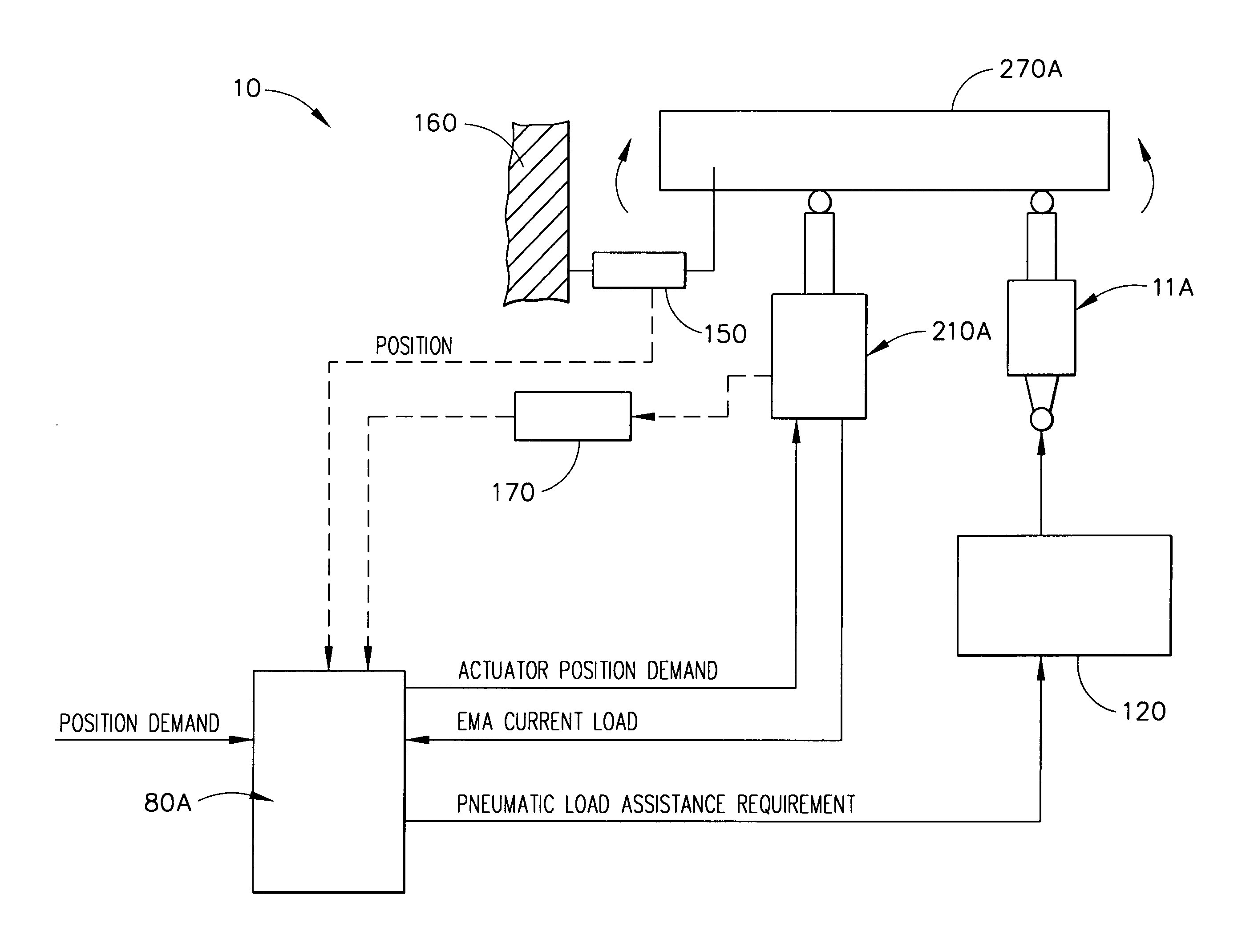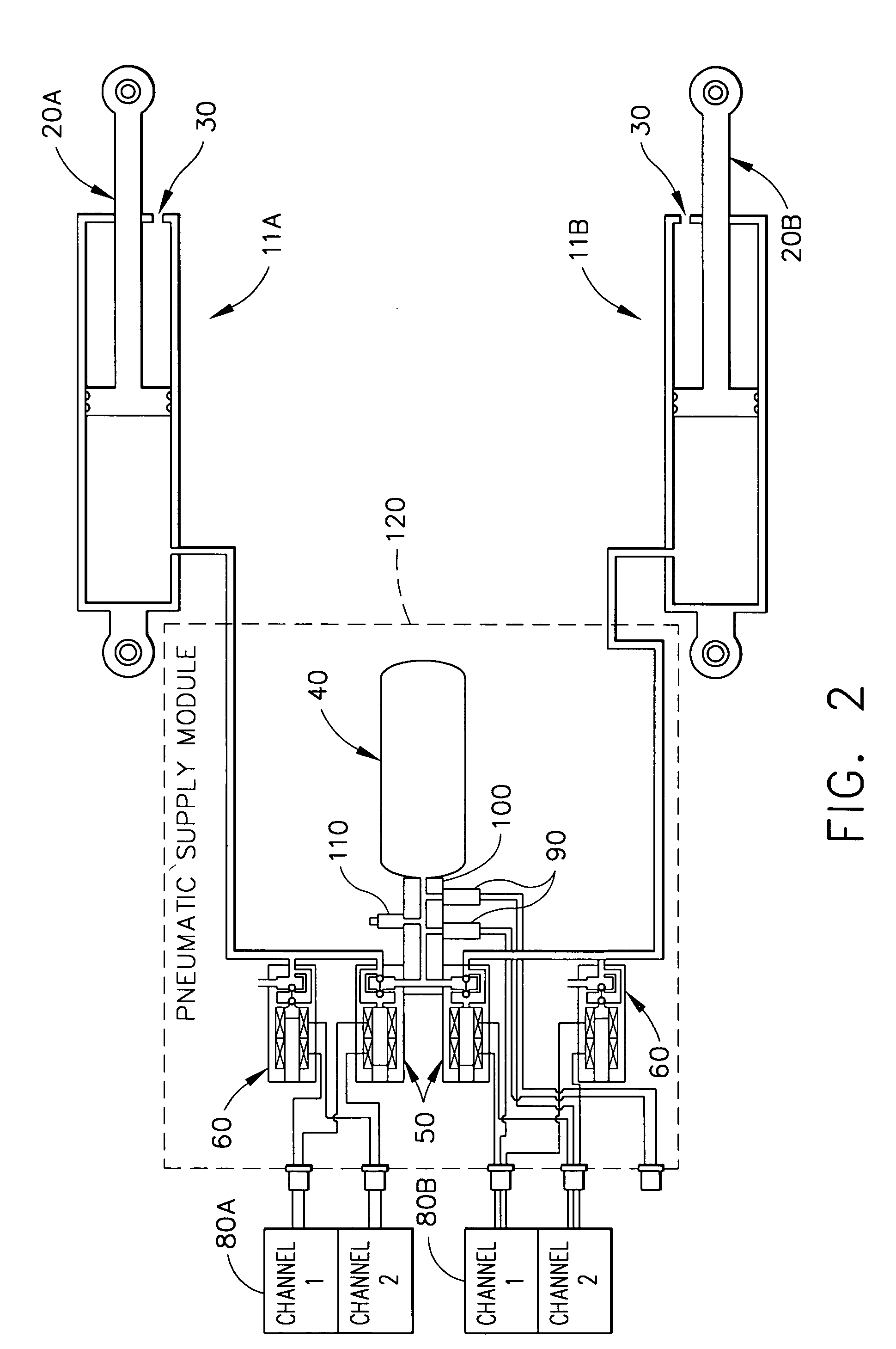Flight control actuation system
a technology of flight control and actuator, applied in the direction of aircraft power plants, power amplification, transportation and packaging, etc., can solve the problems of affecting flight vehicle weight constraints and aerodynamic envelope limitations, design does not account for significant variances from the normal operational range, and risks of overloading the electrical actuator, so as to reduce the load on the electromechanical actuator
- Summary
- Abstract
- Description
- Claims
- Application Information
AI Technical Summary
Benefits of technology
Problems solved by technology
Method used
Image
Examples
Embodiment Construction
[0030]The following detailed description is of the best currently contemplated modes of carrying out the invention. The description is not to be taken in a limiting sense, but is made merely for the purpose of illustrating the general principles of the invention, since the scope of the invention is best defined by the appended claims.
[0031]The present invention may comprise a position controlled actuation system to accurately position a control surface while using an auxiliary actuation system to provide a load trim function for the position controlled actuation system. The present invention may allow the use of an auxiliary actuator to provide a large portion of the force to control the actuation system position. This may limit the smaller portion of the load, provided by a positioning actuator, to a level that is within the capability of a relatively low power positioning actuator.
[0032]The invention is useful for controlling all types of flight vehicles, including, but not limite...
PUM
 Login to View More
Login to View More Abstract
Description
Claims
Application Information
 Login to View More
Login to View More - R&D
- Intellectual Property
- Life Sciences
- Materials
- Tech Scout
- Unparalleled Data Quality
- Higher Quality Content
- 60% Fewer Hallucinations
Browse by: Latest US Patents, China's latest patents, Technical Efficacy Thesaurus, Application Domain, Technology Topic, Popular Technical Reports.
© 2025 PatSnap. All rights reserved.Legal|Privacy policy|Modern Slavery Act Transparency Statement|Sitemap|About US| Contact US: help@patsnap.com



